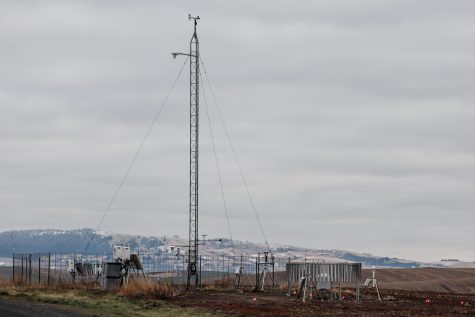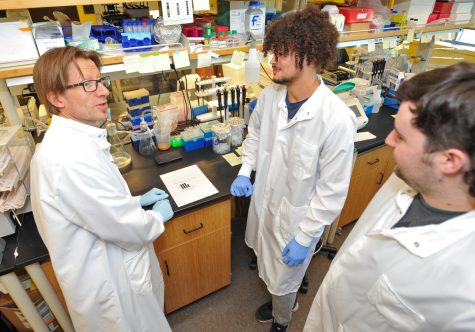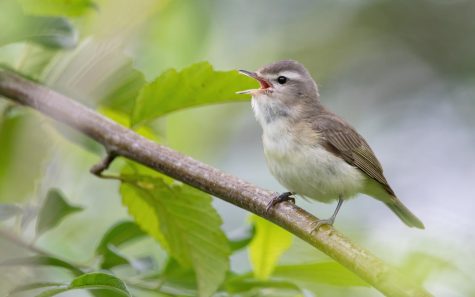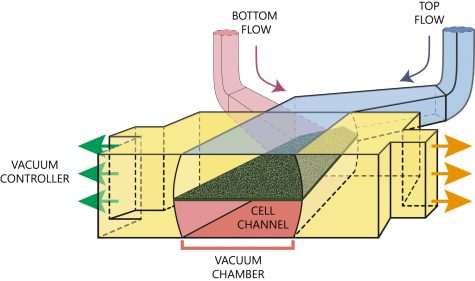‘Bubbly’ study will investigate impacts of nanobubbles on probiotic shelf life
Research in early stages, will continue with other products if successful
Minto Michael, assistant professor of dairy science for the school of food science, showcases the micro nanobubble generator.
February 17, 2022
WSU researchers are experimenting with nanobubbles to preserve the shelf life of probiotics in dairy products.
Probiotics are microorganisms beneficial to gut health. They can help prevent or control ailments like traveler’s diarrhea and allergies. However, probiotics must be consumed on a regular basis to retain those benefits, said Minto Michael, lead researcher and assistant professor of dairy science for the School of Food Science.
Probiotics are in dairy products, but they begin to lose their concentration over time. This makes it to where there are not enough probiotics to provide health benefits, Michael said. There needs to be six logs — 6 million cells per gram of food — of probiotics in order to benefit from them.
“If you survey probiotic products in the market, they tend to lose these live active probiotic cultures,” he said. “Those probiotics — if they’re not present at adequate concentrations — you’re probably not going to get any health benefits.”
The goal of the study is for the probiotics to have a shelf life of at least one month, but longer is preferred, Michael said.
“Right now if you see probiotic dairy products like yogurt, [companies] claim that the shelf life of yogurt is three to four weeks,” he said. “But let’s say if we go to the market and sample yogurt that have live and active bacteria, there are high probabilities that those bacteria are maybe alive, but they are not at the appropriate concentrations to impact health.”
Michael and his team will be studying different probiotics in milk. Additionally, the team will be incorporating ultrafine bubbles, or nanobubbles, in the milk. This will create anaerobic, or non-oxygen, conditions. They hypothesize this will increase the longevity of probiotics and help them grow, he said.
“Probiotics don’t like oxygen too much,” Michael said. “What we are trying to do is incorporate ultrafine bubbles of carbon dioxide, nitrogen and a mixture of nitrogen and hydrogen. We are basically removing oxygen and putting these non-oxygen, small bubbles in milk.”
Michael and his team will be using a micro nanobubble generator from Japan to inject the nanobubbles into the milk, he said.
“In very simple terms, [the generator] injects gas under very high pressure in the milk,” he said. “And when that gas goes in the milk at very high pressure, it’s divided into very small tiny bubbles.”

The micro nanobubble generator will incorporate gas bubbles to create anaerobic conditions for probiotics to grow.
The research is still in its early stages. Preliminary research has been completed, but the final study still needs to be conducted, said Sonali Sharma, graduate research assistant for the School of Food Science.
If the project is successful, future directions of the study will include doing this same experiment with yogurt, Sharma said.
“It will be very beneficial for the dairy industry because you will be able to get those probiotics at a high log,” she said.
Michael said he came up with this study because of the U.S. becoming more health-conscious and demanding functional foods — these are foods that provide health benefits.
The impact nanobubbles will have on milk is currently under investigation and there are no conclusions determining its efficacy, he said.

















